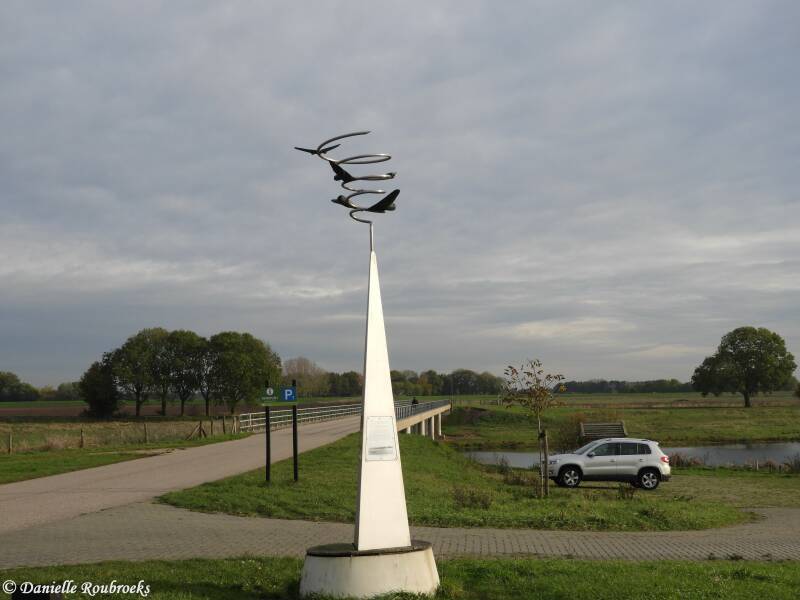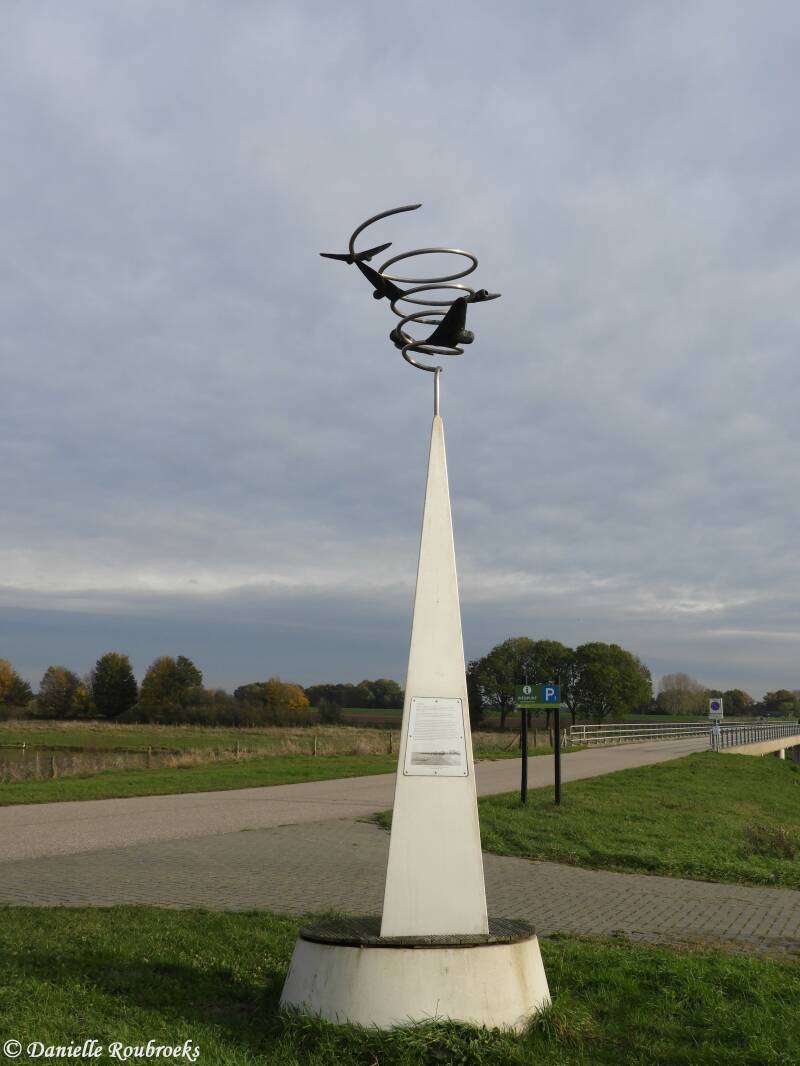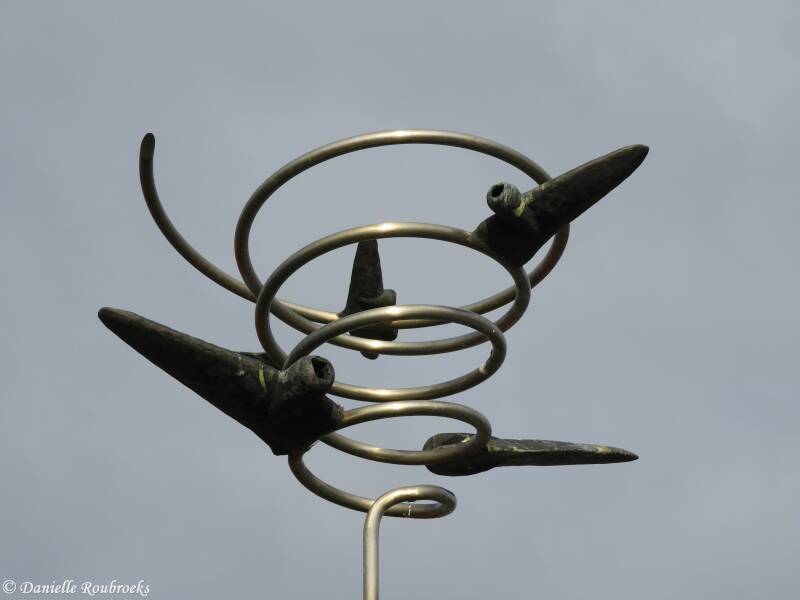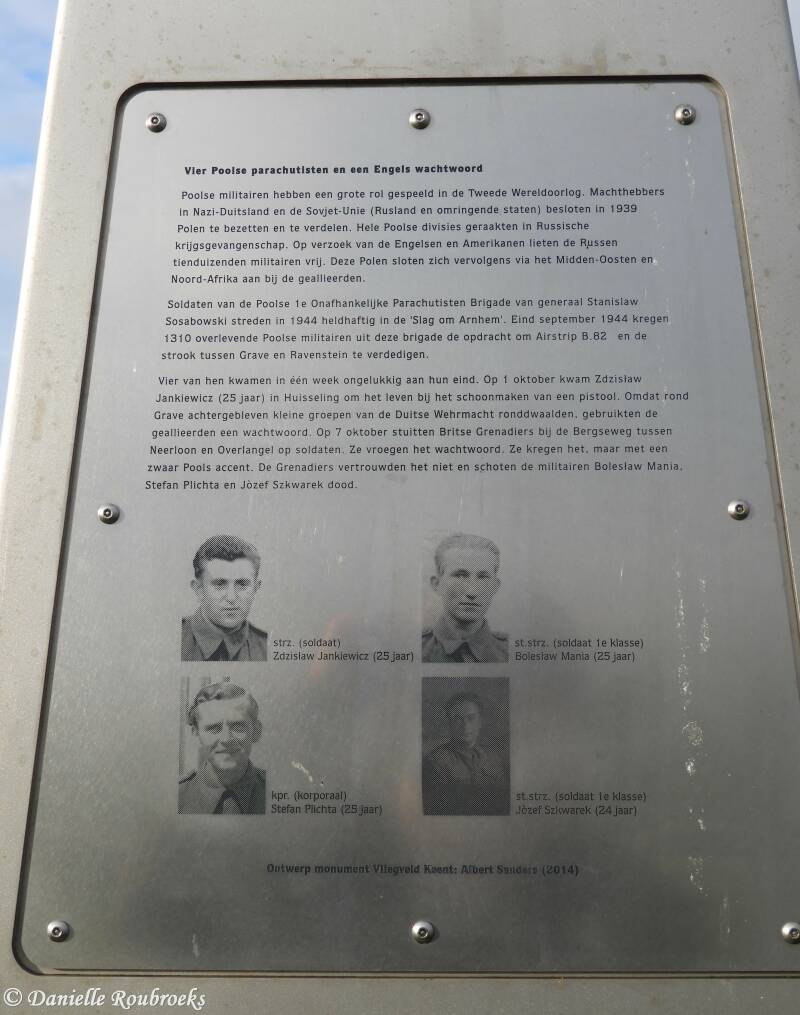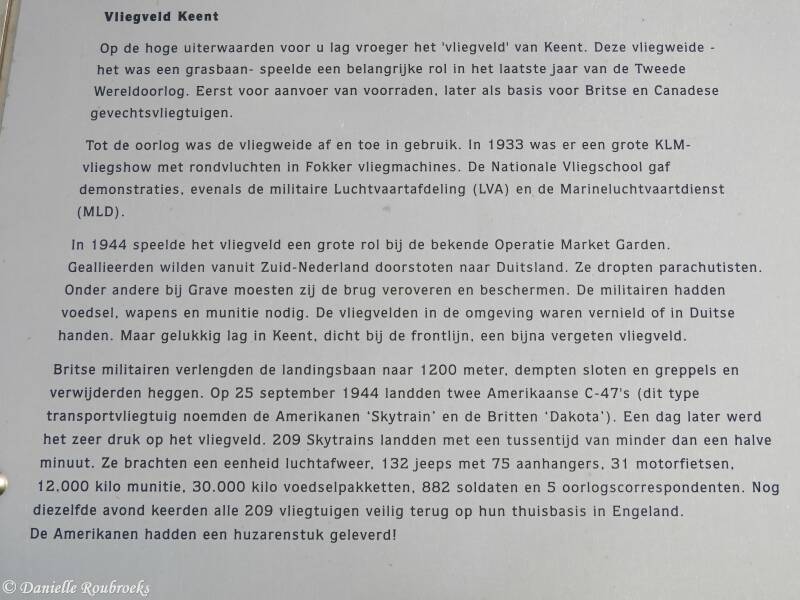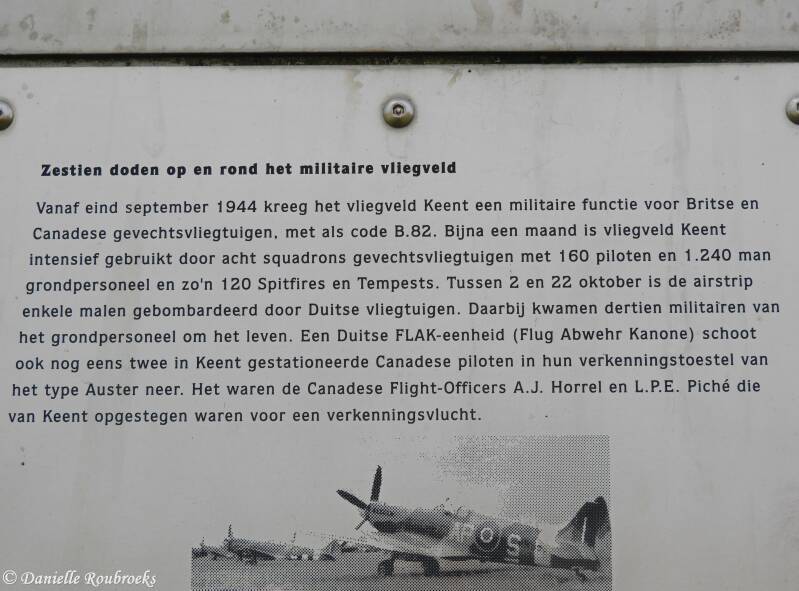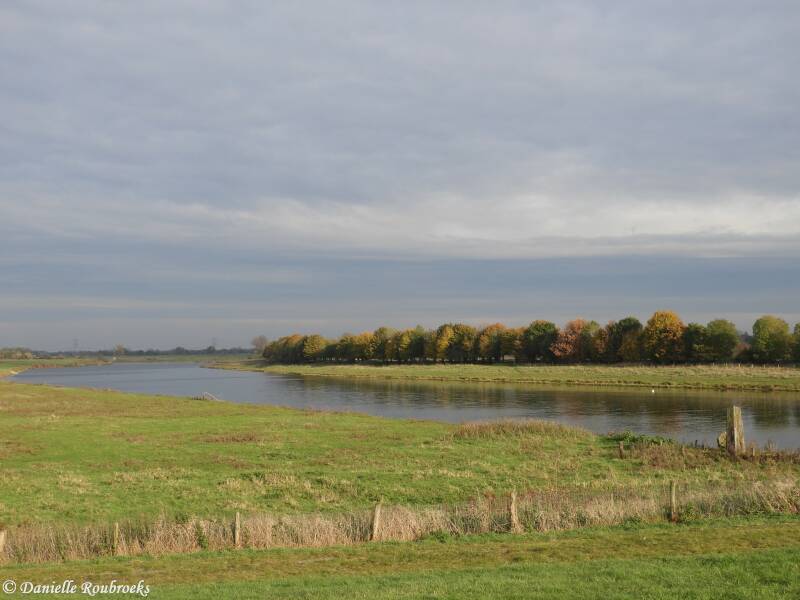Ravenstein Monument
Memorial Temporary Airstrip B-82
When the Second World War broke out, the Germans only used the grass runway, extended from 600 meters to 1200 meters, as a parking lot. The Allies launched many hundreds of fighter planes from the "Airstrip B-82 Grave / Keent". In 1944 the airfield played an important role in operation "Market Garden", the liberation of Nijmegen.
On September 25, 1944, two American C-47s landed in Keent. This type of transport aircraft was called Skytrain by the Americans. A day later, 209 Skytrains landed with intervals of less than half a minute. They brought an anti-aircraft unit, 132 jeeps with 75 trailers, 31 motorcycles, 12,000 kilograms of ammunition, 30,000 kilograms of food parcels, 882 soldiers and 5 war correspondents. The same evening, the 209 planes returned safely to their home base in England.
At the end of September and the beginning of October the airstrip was defended by 1,310 soldiers of the Polish 1st Independent Parachute Brigade of General Stanislaw Sosabowski. Four of them came to an unhappy end in one week: Zdzislaw Jankiewicz (25) was killed while cleaning a gun. Three others (Boleslaw Mania, Stefan Plichta and Jòzef Skzwarek) were shot for using a heavy Polish accent to utter the password the Allies used to communicate with. British Grenadiers did not trust it and shot the three.
On October 2, 1944, the Canadian Flight lieutenant Russel R. Bouskill (28) crashed in Keent after his plane was shot at by the Germans. Farmer Thijs van de Berg cleaned up the scrap of the plane in an old bomb crater. In 1996 the clock of the Spitfire was found by researcher Wim Boeijen. It stopped at a quarter past twelve.
Between 2 and 22 October the air strip was bombed several times by the Germans. In addition, 13 soldiers of the ground personnel were killed. In addition, Canadian Flight Officers A.J. Horrel and L.P.E Piché shot by a German FLAK unit after taking off from Keent for a reconnaissance flight.


